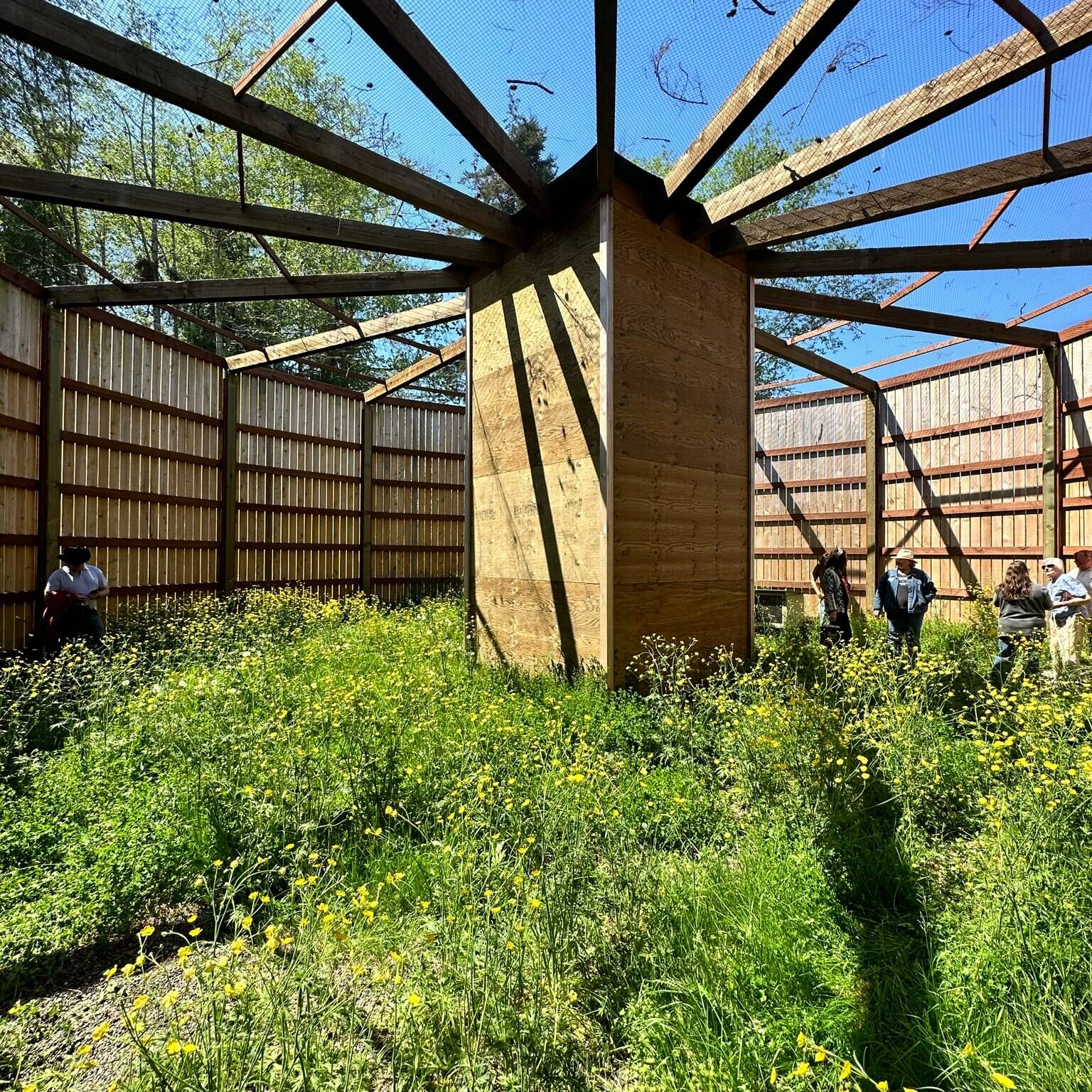A new facility on the campus of the Twin Harbors Wildlife Center in Montesano will allow wildlife doctors to more seamlessly rehabilitate, and then release, sick and injured birds of prey.
The 50-foot-wide, 16-foot-tall circular pen will serve as a training arena for raptors working to regain muscle strength and survival skills as they prepare to reenter the outside world. Below a ceiling of marine-grade netting and walls of raw cedar, eagles, hawks and owls will hunt rats — training prey — darting through a thick bed of natural vegetation on the ground below.
Conjoining the flight center is another new building: a small, sloped shed called a mew — intermediate housing for birds strong enough to be on their feet but not yet ready to take flight.
Dr. Sonnya Wilkins, president and co-founder of the Twin Harbors Wildlife Center, said the new facilities will reduce stress endured by large birds during the rehabilitation process. That process generally consists of three stages: initial treatment, or hospitalization, inside the center’s headquarters, the intermediate mew stage, and training in the flight building.
Previously, raptors were forced to endure three-hour car rides following their hospitalization at the wildlife center to the nearest flight building, and, following the training, another three-hours back to the Twin Harbors area for release in their original habitat.
“This put added stress on an already fragile patient,” Wilkins said.
Now, Wilkins can carry the big birds just a few hundred feet to the wooden cylinder just north of Highway 12, meaning the center is fully permitted to conduct raptor rehab from start to finish.
Wilkins said the flight building has been a priority ever since she and Dr. Corrie Hines co-founded the wildlife center four years ago. Construction took two years and cost $47,000, which included donations from local businesses and individuals as well as contributions from the Washington Department of Fish and Wildlife.
The mew cost $15,000 and was funded by Partners 4 Wildlife, a program associated with the Raptor Center at the University of Minnesota.
The flight building is not open to the public as Washington state law prohibits publicly displaying wildlife in rehab. All wildlife is subject to control by the state.
This year alone, the center has admitted eight bald eagles — more than any other year so far, according to Wilkins — for various reasons from lead poisoning to collisions with cars, and even a gunshot wound currently under investigation.
“A lot of times they don’t make it,” Wilkins said. “If a bald eagle is sick enough for you to pick up, there’s something terribly wrong with it.”
When an eagle does make a full recovery, though, returning it to the wild can be exhilarating, Wilkins said, citing an eagle release on Quinault Indian Nation land last year.
Peregrine falcons and Red-Tailed and Sharp-Shinned hawks are all past patients at the center. Wilkins said raptor rehab is “kind of my passion, this is my favorite part of it.”
Raptors represent only a fraction of wildlife the center treats. The center provides care to more than 150 species in Grays Harbor and Pacific counties, including small mammals, deer, bear cubs, other birds and, once, a green iguana from South America.
When not in use by raptors, the new flight center will also act as a training ground for other animals in recovery, and will be available to other wildlife rehabilitators in the area. Because WDFW partially funded the structure, Wilkins noted, it’s prohibited from housing nonnative species, such as possums, cottontail rabbits and gray squirrels.
Wildlife rehab is conducted by a team of two certified wildlife veterinarians, staff of the nearby Grays Harbor Veterinary Services, other community partners and volunteers. Wilkins said the center is looking for more volunteers.
Contact reporter Clayton Franke at 406-552-3917 or clayton.franke@thedailyworld.com.


